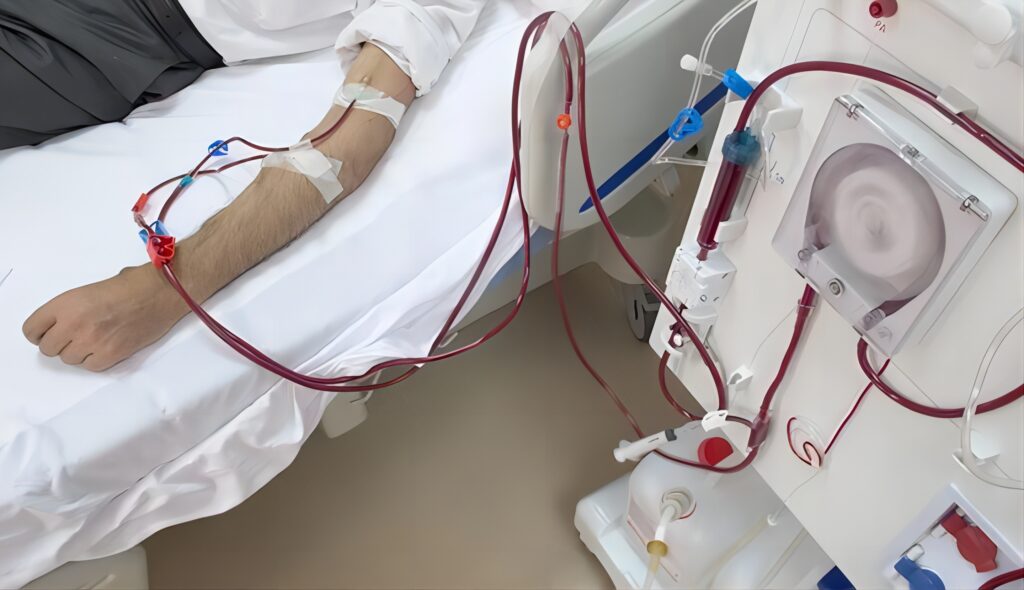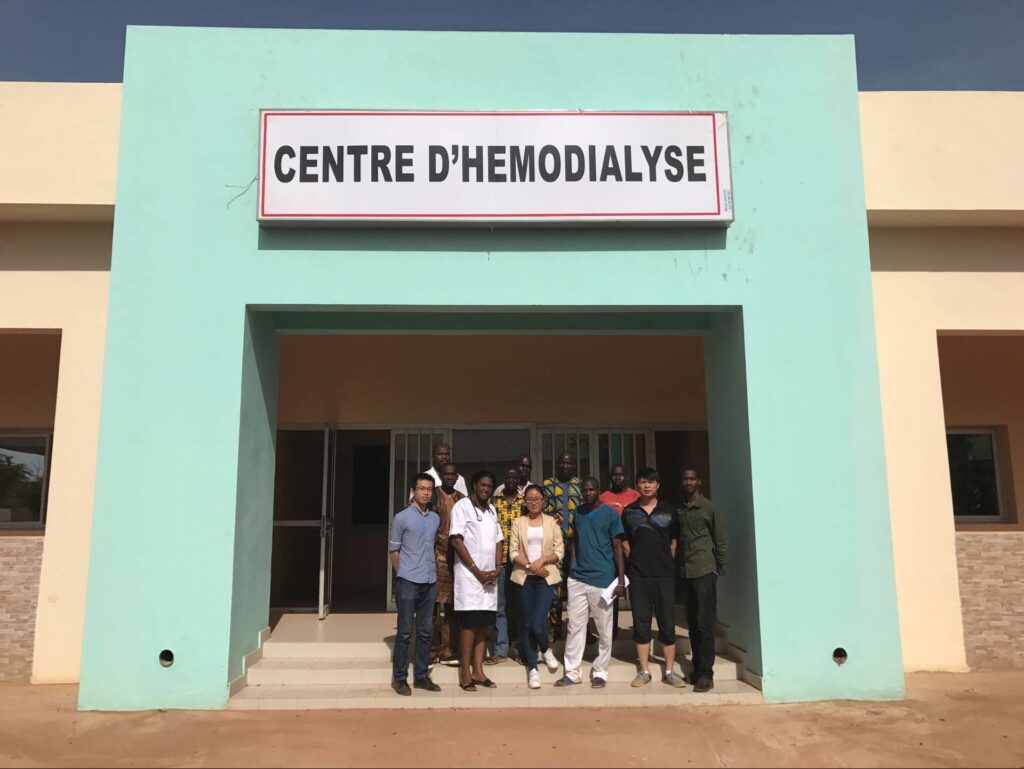Introduction
In medical institutions, the dialysis center is an essential component of the nephrology department. It serves as a facility for renal replacement therapy through hemodialysis for patients with chronic or acute kidney failure caused by related diseases. The center is equipped with hemodialysis and blood filtration equipment and is a clinical department established by major internal medicine hospitals to treat acute and chronic kidney failure diseases.

What Is Hemodialysis?
Hemodialysis is one of the methods for renal replacement therapy in patients with acute and chronic kidney failure. It involves draining the blood from the body and passing it through a dialyzer composed of numerous hollow fibers. Inside and outside these fibers, the blood undergoes diffusion/convection exchange with an electrolyte solution (dialysate) that has a similar concentration to that of the body, thereby removing metabolic waste, maintaining electrolyte and acid-base balance, and eliminating excess fluid from the body. This entire process of purifying and returning the blood is known as hemodialysis. Depending on the treatment method, it can be categorized as intermittent hemodialysis and continuous hemodialysis. In addition to being used for chronic renal failure replacement therapy, it is also widely applied in cases of acute renal failure, multiple organ dysfunction syndrome, severe trauma, acute necrotizing pancreatitis, hyperkalemia, hypernatremia, acute alcohol poisoning, and other conditions caused by different factors.
-21-1024x683.jpg)
Services Provided By The Dialysis Center
The dialysis center primarily offers various dialysis techniques, including hemodialysis, blood filtration, hemodialysis filtration, blood perfusion, simple ultrafiltration, adjustable sodium dialysis, sequential dialysis, heparin-free dialysis, extracorporeal heparinization dialysis, peritoneal dialysis, ascites reinfusion, and continuous renal replacement therapy (CRRT). The center should have appropriate facilities, equipment, and personnel that align with its functions and tasks.

Facility Construction Of The Dialysis Center
The construction of the dialysis center should include essential functional areas such as the dialysis treatment area, positive dialysis treatment area, water treatment area, treatment area, waiting area, reception area, storage room, patient changing room, and patient’s family lounge. The surrounding environment should be relatively independent and quiet, generally located near outpatient departments or nephrology wards. If the center has a large number of dialysis machines, an equipment maintenance engineer’s office should also be established. If conditions permit, a dedicated operating room can be set up. The construction layout should follow the principles of environmental hygiene and infection control, with areas classified as clean, semi-clean, and contaminated based on their cleanliness levels.
1-1024x700.jpg)
Basic Standards For Dialysis Room
The dialysis area is where patients receive dialysis treatment. The general dialysis area must be separated from the positive area, and the contamination and medical waste generated in the positive dialysis area should not be transported through the general dialysis area. There should be physical partitions between the two, and a buffer room can be used for healthcare personnel to change into and out of isolation clothing and practice hand hygiene. Lightweight materials can be used as internal partitions.
The dialysis room should be equipped with approved dialysis machines, water treatment devices, basic rescue equipment, oxygen supply systems, central negative pressure interfaces, or portable negative pressure suction devices, dual power supply systems, and ventilation equipment. Each dialysis unit consists of a dialysis machine and a dialysis bed (chair), with a nurse station set up in the dialysis treatment area. The area and facilities in the corresponding region should meet the requirements for normal operations.
Furthermore, a sufficient number of healthcare professionals who have undergone at least six months of specialized training in dialysis from institutions designated by the health administration department must be equipped. Independent dialysis rooms should have a minimum of three licensed physicians and implement a three-tier physician responsibility system. Dialysis rooms set up within relevant departments can have physicians arranged by those departments, with at least one attending physician responsible for the daily operations of the dialysis room. The staffing of nurses should be reasonably arranged based on the number of dialysis machines, patients, and the dialysis environment. Nurses should be proficient in the nursing and operation of dialysis machines and various dialysis access routes, strictly follow operational procedures, regularly inspect patients and machine operations, and maintain relevant nursing records.
It is particularly important to note that the dialysis room should establish and strictly enforce systems such as disinfection and isolation protocols, dialysate and water quality testing protocols, relevant diagnostic and treatment technical specifications and operational procedures, and equipment operation and maintenance records. The clean area should undergo effective air disinfection daily, and after each dialysis session, bed sheets and covers should be replaced, and all surfaces and floors in the dialysis area should be disinfected and wiped. The hospital’s infection control monitoring system, including environmental hygiene monitoring and infection case monitoring, should be strictly followed. Equipment maintenance should include regular flushing and disinfection of the water treatment system, periodic water quality testing to ensure compliance with quality requirements, and measurement of residual disinfectant levels in the tubing after each disinfection and flushing process to confirm they are within safe limits.
1-1024x683.jpg)
CNMEDITECH is dedicated to the long-term research of the dialysis market. As stated in our mission, “Consolidating global medical resources, matching target market needs, and solving procurement problems for customers has been our mission”. Please contact us with any dialysis product-related inquiries!

-11-scaled.jpg)







2 Responses
good
I agree with you